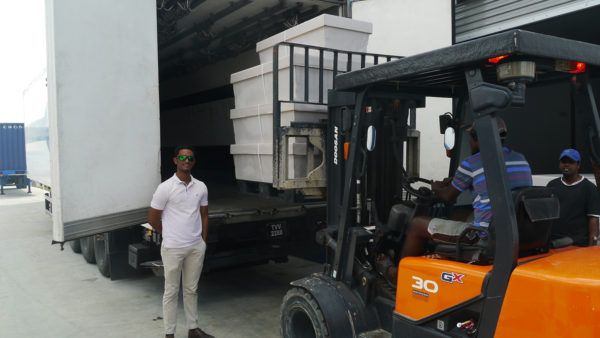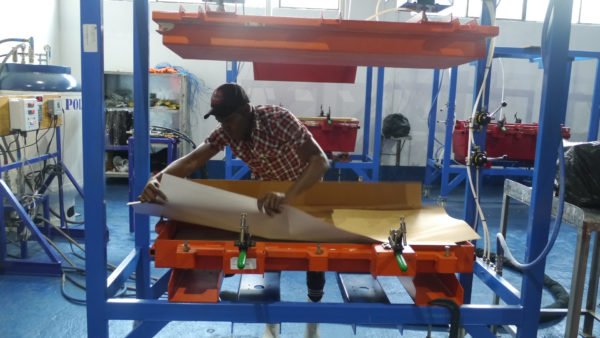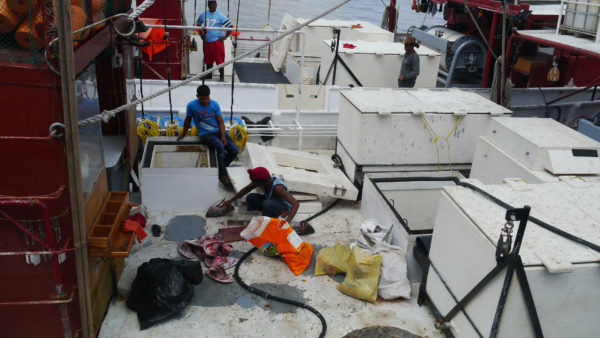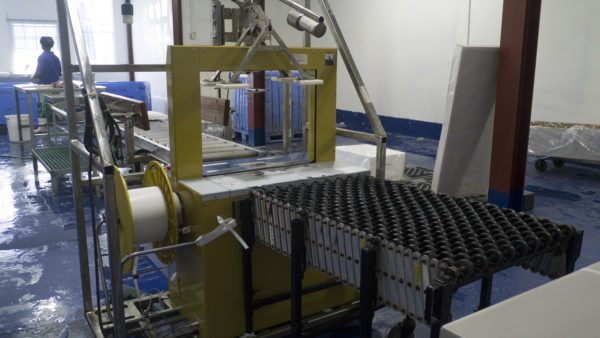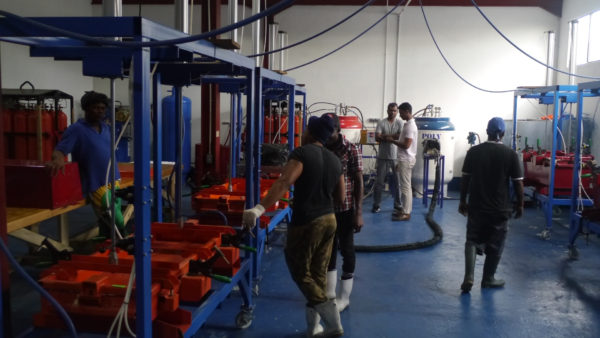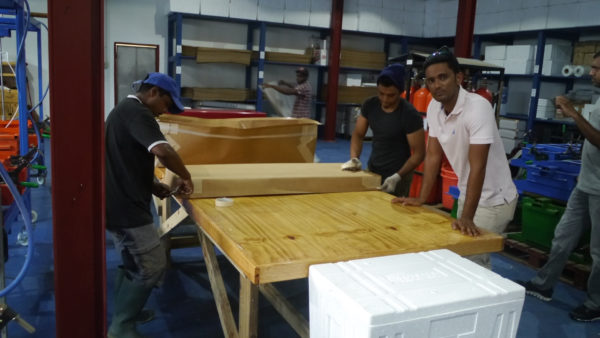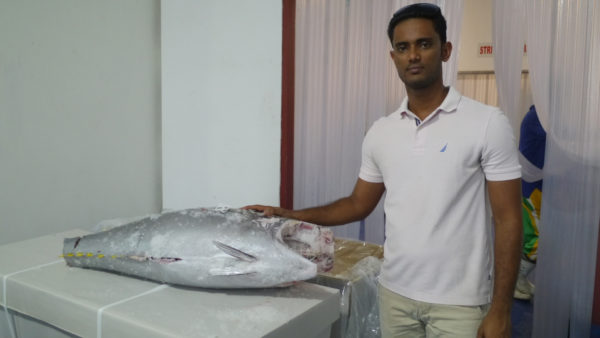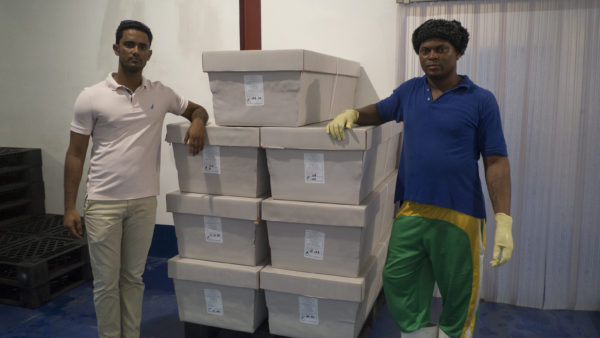Tuna fishing is new to Guyana but local business entrepreneur Pritipaul Singh has undertaken a US$15 million venture, which has seen success since it was established about six months ago.
The venture requires special techniques and Singh who said he always “like to have a challenge,” aims to meet the export market.
At the moment, he catches Yellowfin or Bigeye tuna, which is a delicacy especially in raw preparations such as ceviche, tartar or in a sushi roll. He has plans to sell the tuna locally but noted that the market may be very small.
He is also eyeing the market for Skipjack tuna that is mostly used for canning. This would require a US$50 million investment as Skipjack is caught through a different fishing technique. This tuna species would exported and would also be available on the local market.

Singh, who had humble beginnings, is the owner and Chief Executive Officer (CEO) of Pritipaul Singh Investments Inc (PSI). He established the business several years ago at a young age and began exporting seabob shrimp and fish.
Apart from exporting to the US, Singh ships shrimp to Europe, while fish and shrimp are sent to the Caribbean, the US and Canada. Boasting that his company is involved in “100 per cent exports,” he said proudly that the “foreign exchange is close to $10 billion in terms of turnover and can head up to $50 billion. So we are earning foreign exchange. We are not going on the streets to buy foreign exchange, we bring it in.”
He has also created employment for hundreds of people and has supported many local businesses by purchasing construction items, groceries, and haberdashery, among others.
On that note, he emphasized the need for government’s support so he can move forward in the industry with his major plans for the future. According to him, the head of the Guyana Revenue Authority had granted him duty-free concession, but “his subordinates stopped it.”
He appreciated the fact that two government ministers recently talked proudly about Guyana now having a tuna factory. He hopes that they would make the effort to meet with him to discuss the challenges he faces with the venture.
Singh said that the tuna is caught via fishing lines and hooks that are baited with squid. He imports 100,000 pounds of squid per month from China, India or wherever he can get it, and it is used solely for the purpose of baiting the hooks to catch the tuna; it is not for consumption.
In fact, he said, the amount of squid he imports monthly is too large for the Guyanese population to consume.
According to the businessman, the withholding of the duty-free concession was “never bargained for. This is putting more pressure on the business; it is preventing me from importing more baits and is hindering my catch.”
He is confident that with government’s support, he would be able to “go bigger… we would end up with [importing] 200,000 pounds [of squid] per month” or about 30 to 40 containers per year.
He currently has a fleet of eight vessels and is working assiduously to increase it to 15 or more by the end of the year.
His policy is to be involved in every aspect of the business and he has taught two of his sons, Pritipaul Singh Jr, who is the Managing Director, and Sanjay Singh, the Deputy Managing Director, the same principle.
“We open the business. We close the business. I’ve learnt one thing: if I say I’m going to do something, I’m behind it every step,” Singh stated.
Tuna factory
During a tour of the tuna factory on Wednesday morning, Pritipaul Singh Jr was happy to explain how the process works.
“The whole concept of this [catching tuna] is not your conventional type of fishing; it is not with nets, it’s basically a main line with attached lines that drop with hooks,” he told this newspaper.
“These hooks are required to have baits on them. Part of the reason we are getting a hard time is because we are working on getting the right baits. Being a new venture, we want to be as profitable and as successful as possible.”
He said squid is “absolutely the right type of bait and we are also looking at using fish baits because the price for squid has risen to almost three times the price.” Sardine and Barracuda are two other types of fish that can be used as bait.
“For us to be productive and efficient in what we do, we need to have the correct bait to make sure that we fish for the tuna….”
He explained that the captain and crew-members set out to the open sea on a 13-day journey aboard the specially designed tuna boats.
The fishing process takes place for “10 days and the other days are running time.” They go beyond 200 to 300 miles off shore or 150 miles into the exclusive economic zone and even to Brazil.
He noted that they go beyond the borders so as to productive and competitive
The fishing starts at around 2,000 fathoms, which is about 12,000 ft because tuna feeds at a certain depth. “That type of fishing is not only about the location but it has to do with the temperature of the water and the type of bait,” he said.
Two sets of fishing takes place each day using “1,000 hooks on each set. Each hook is required to have baits to increase the chances of catching.”
After throwing the lines, to which floats are attached, they would leave them for less than 10 hours. They then pick up the lines and would bring the fish through ‘windows’ at the side of the boat.
The boats are equipped with radio beacons to which long poles are attached, and these locate the fishing lines in case a ship passes and accidentally cuts the line.
Seventy per cent of the processing is done on the boat with the crew cleaning the fish – removing the head and gut and ‘bleeding’ the fish – and placing them into ice lorry boxes.
He explained that “the purpose of bleeding is to ensure that the meat of the fish is not pungent with blood and that there is no excess blood left inside when the fish is cut.”
When it arrives at the wharf, the remaining 30 per cent of processing is completed and this involves “cutting the end part of the tail” before it is taken into plant for grading and then tagging.
Box plant
The tuna is then packed into boxes that are manufactured at the company’s recently launched box plant. The grade of each fish and the amount is recorded on a tally sheet before it is loaded into refrigerated reefers. The number one grade would cost about US$9 and number two about US$4.
The managing director said they use the time while the boats are out at sea to prepare for the air shipment that leaves a few days per week for Miami.
The state-of-the-art box plant is located next door to where the tuna processing and packaging take place.
Singh decided to establish the facility and import the raw materials to manufacture the boxes as this method is more economical than to purchase them because of the volume the business requires.
They are putting systems in place in the shrimping industry and are also using small devices so that small fish would not be trapped and turtles would be protected. He invests US$1 million each time he sends a boat out and noted that if he does not “have the right people your boat can come back empty.” Most of his workers are local but he has brought in a few Indonesians.
Singh said: “These boats are fully equipped, and they are well maintained. We have people to clean them and change the linens.”
He added: “I have learnt the concept that cleanliness is next to godliness. And when you have God within your environment” you can be successful. “That is why this venture has started. I’ve started from zero and I am not stopping here, I am growing. I am providing a future for bringing in more foreign exchange.”
